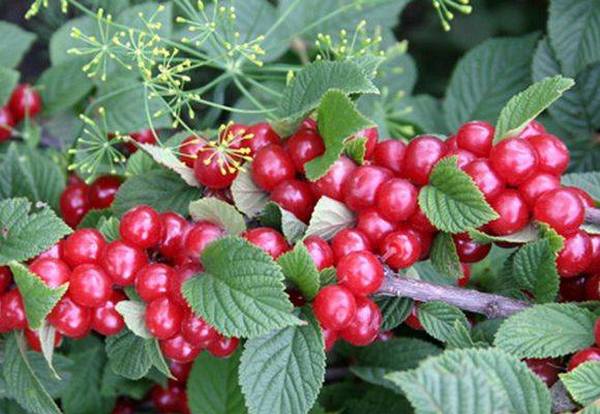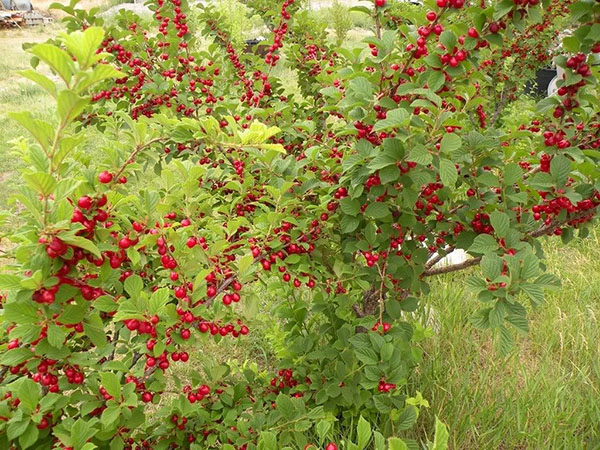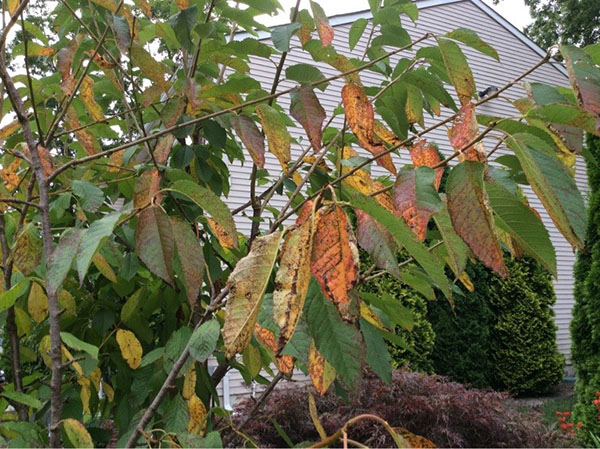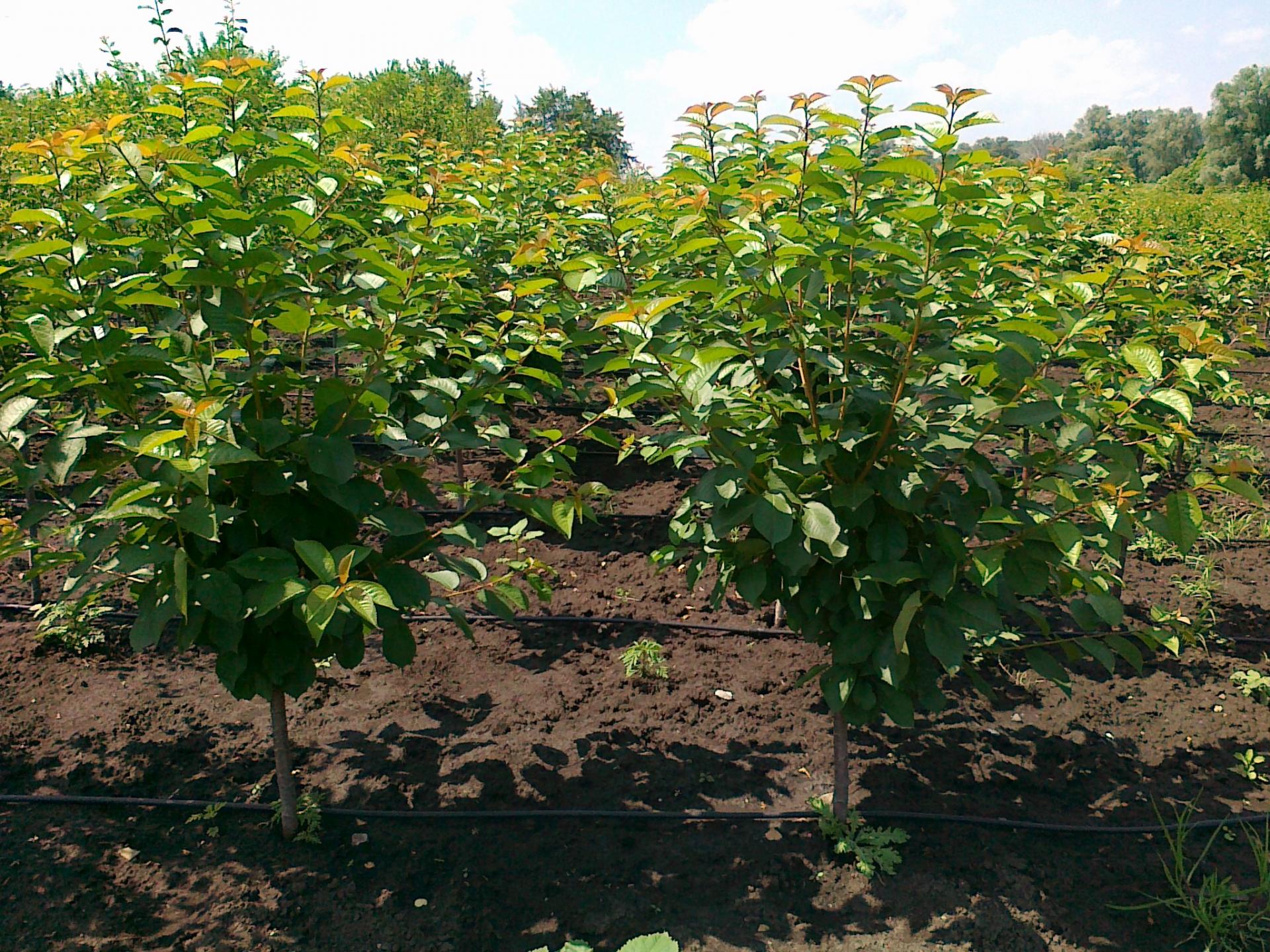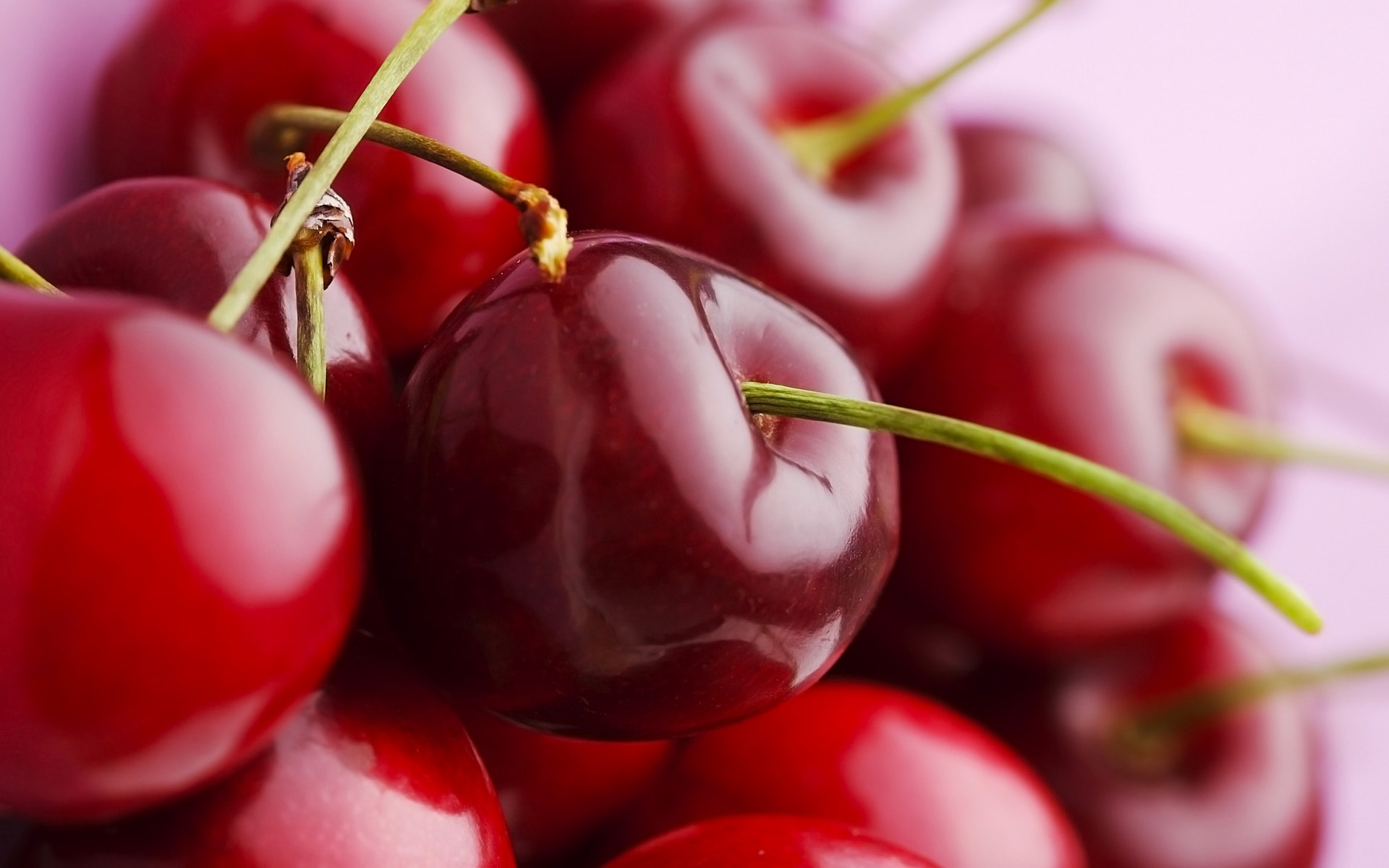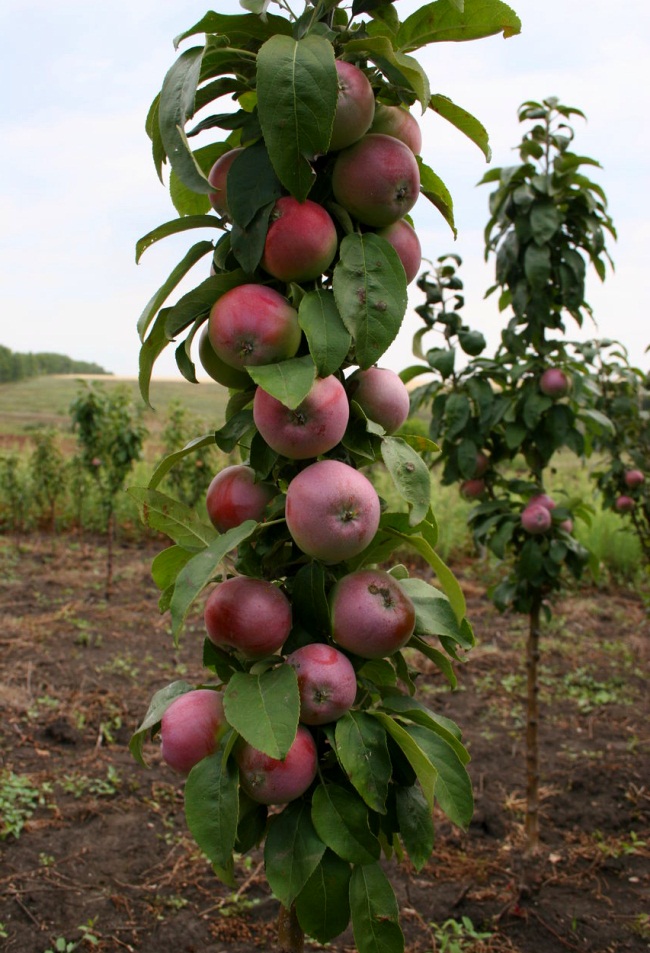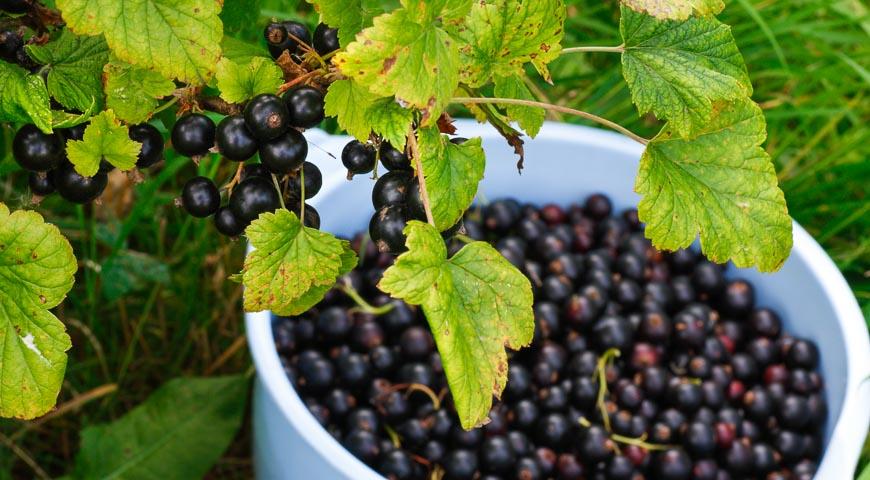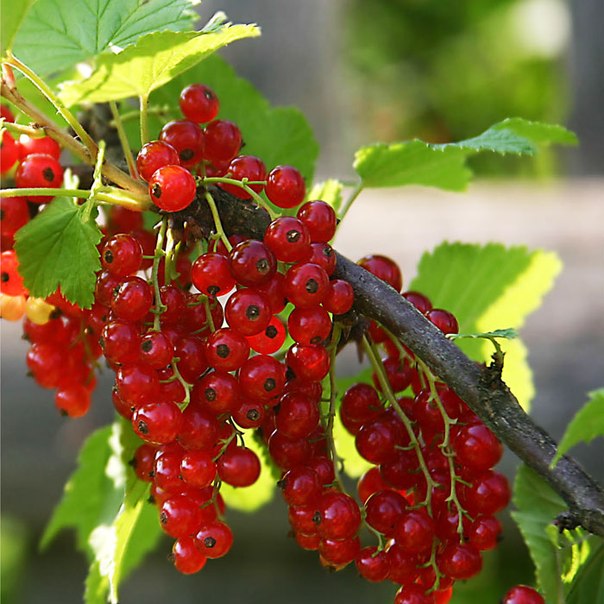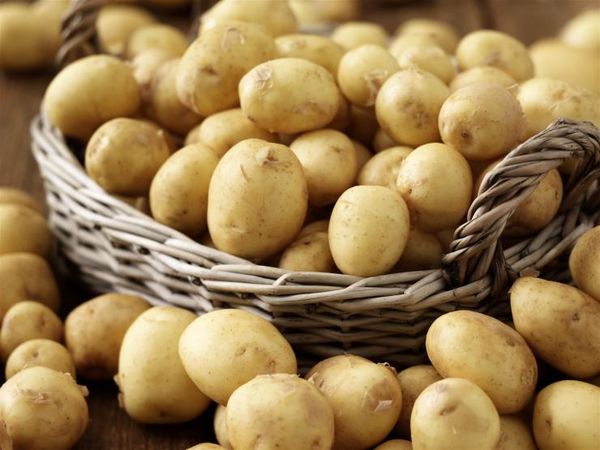Content:
Felt cherry came to our country from Mongolia. At first it was cultivated in the Far East, but it did not take root there well. But in the Moscow region, the cherry has taken root just fine.
Culture information
Felt cherry belongs to a fairly fertile horticultural crop. More than 9 kg of berries can be obtained from one tree. Fruit ripening is very amicable. The culture is not very demanding in its care. Trees are able to withstand quite high (35 - 40 degrees) frosts, as well as prolonged drought. Saplings grow and develop quickly, which cannot be said about other types of cherries.
The culture looks like low bushes. Thanks to this, several bushes can be grown in small areas. They have an attractive appearance, especially during the flowering period, so many gardeners use felt cherry bushes for plot decoration.
The felt cherry tastes like a plum. Often it is crossed with plum, apricot, cherry plum or peach. Crossing with cherries is extremely rare.
The fruit ripens several weeks earlier than that of ordinary cherries. Berries contain a large amount of carbohydrates, organic acids, vitamins B, PP, C, iron. This makes them very beneficial for the human body.
Berries are used for making desserts, compotes, winter spins, and various drinks. They are frozen for the winter or dried.
Felt cherry: varieties for the Moscow region
Breeders have bred many varieties of felt cherries. The main difference between them is the ripening period of the berries. According to this criterion, varieties are divided into:
- early;
- medium ripening;
- late.
There is also a difference in the color of the berries, it ranges from light pink to dark red.
For the Moscow region, the following are the most characteristic varieties:
Natalie. The tree has a well-developed dense crown, small pink flowers. The berry weight does not exceed 4 grams. The flowering period begins in May. The first crop can be harvested 2 years after planting the seedling. The variety has good immunity to diseases such as coccomitosis and clasterosporium disease.
Princess. A distinctive feature of this variety is its cold resistance. The tree does not reach a great height (1.5 m). The crown has the shape of an oval. The leaves and fruits are small. Cherries are often used as pollinators for other cherry varieties.
Alice. The berries have a juicy and sour pulp. This self-fertile variety cannot withstand prolonged drought. From one bush, you can get up to 9 kg of fruit.
Summer. Cherry belongs to the early-growing varieties. The bush is quite compact. A distinctive feature of the variety is that its berries are uneven in color. It can range from pink to deep red. One bush gives up to 6 kg of fruit.
Firework. This is a short, bushy tree that does not like frequent watering. The variety belongs to long-livers. Its yield reaches 11 kg of berries per bush. The ripening period lasts until mid-July.
Gardeners of the Moscow region prefer to grow these particular varieties of felt cherries because they have characteristics that make them ideal for cultivation in this region. Among the most important are the following:
- high yield rate;
- one-time ripening of berries;
- resistance to the development of diseases characteristic of berry crops;
- juiciness of fruit pulp;
- the possibility of their transportation and long-term storage;
- ability to withstand prolonged drought.
It is these characteristics that are key when summer residents choose these varieties.
Felt cherry: planting and care in the Moscow region
For planting, seedlings that have reached 2 years are better suited.
Landing
Fertile, drained soils are ideal for growing this type of crop. It is recommended to give preference to loamy or sandy loamy soils.
Trees should be planted in well-lit, elevated locations. The optimal time for planting varietal material is considered to be the beginning of spring, before the buds begin to bloom on the trees.
Before planting, a hole is dug 50 cm deep, 60 cm wide. A nutrient mixture of organic fertilizers, lime, phosphorus and potassium is added to the bottom of the hole, which are evenly mixed.
The root system of each seedling is pruned. The length of the cut ranges from 19 to 26 cm. Cutting points must be processed with a chatterbox made of clay and water.
After the seedling is immersed in the ground, the hole is covered with earth and tamped well. The near-stem space is watered with 2 - 3 buckets of water, and then mulched.
Cherry Felt is able to reproduce not only by seedlings, but also by seeds. To do this, they are separated from the pulp, and then washed thoroughly. The washed seeds should be dried in a well-ventilated place. When drying, keep away from direct sunlight.
The end of August is best suited for planting seeds. They are mixed with slightly moistened sand and placed in a cool place, where they are stored for 1 month. After that, the seeds are sown into grooves, the depth of which does not exceed 2.5 cm.
With the onset of spring, seedlings begin to appear in the beds. With good care, you can achieve rapid seedling growth. After a year, the seedlings need to be planted.
Care
Top dressing should be carried out after the end of the flowering period of the bushes. Fertilizers are applied around the trunk. As a top dressing, a solution prepared from the following fertilizers is used: organic (6 kg), potash (20 g), nitrogen (30 g), phosphoric (70 g). A mixture of these fertilizers is dissolved in 10 liters of water.
Care consists not only in watering and feeding the crown of trees, but also in the timely thinning of the crown. In this case, no more than 12 well-developed shoots should be left.
Diseases
The most dangerous disease for cherry trees is coccomitosis. Its causative agent is a pathogenic fungus that infects leaves. If you do not take the necessary measures, it is possible that almost all the leaves on the tree will fall off. As a result, it will not be prepared for the onset of winter and may simply not survive it.
Moniliosis is no less dangerous. Its causative agent is a pathogenic fungus that infects the plant during its flowering period. When the spores of the fungus hit the pistil of a flower, they quickly germinate there. After that, they penetrate deep into the wood. This process leads to the fact that in the spring the tree dries up.
To combat coccomitosis and other diseases of berry crops, it is recommended to spray trees with special fungicides.
Provided the correct choice of a planting site, variety, with regular watering and feeding in the Moscow region, you can get a good harvest of felt cherries. The berries can be used both fresh and processed. Their composition determines the intake of such an amount of components and vitamins useful for humans, which is necessary to strengthen the immune system, the walls of blood vessels, and ensure the normal functioning of the gastrointestinal tract.
